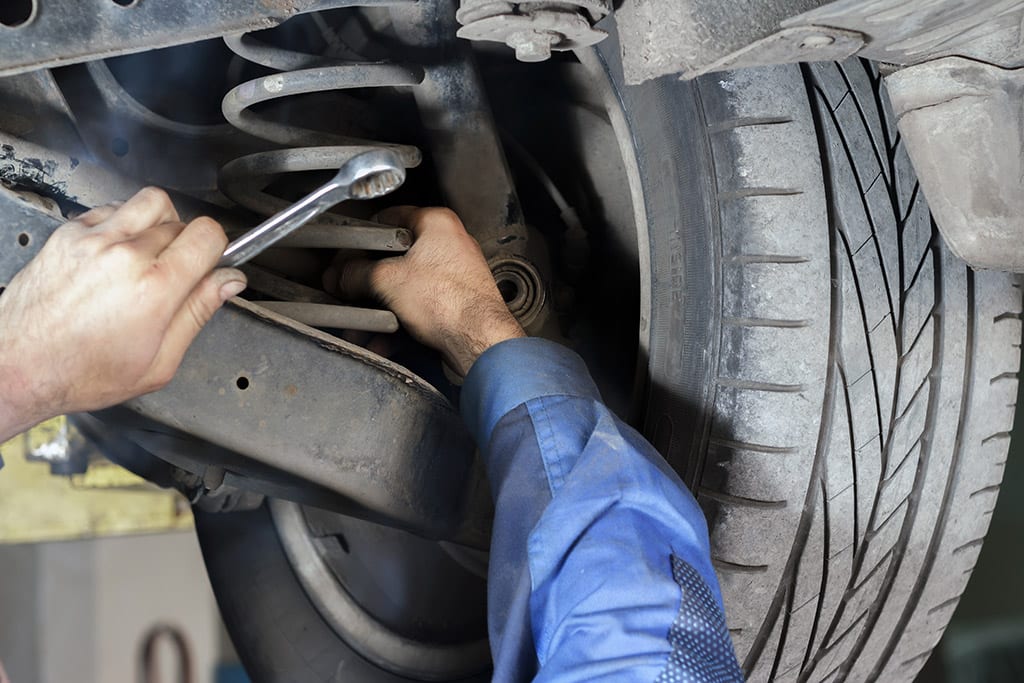Your car is a machine made of many intricate parts, each one serving a crucial function. Whether it’s your engine, tyres, brakes, or cooling system, every detail is paramount. So, it’s obvious when something’s not working correctly.
However, it can also be quite challenging to figure out where the problem is coming from when your car has a problem. So we’ve compiled this list of signs your vehicle is due for suspension service!
Your car is difficult to handle
Do you have trouble steering your car? Trouble steering is one of the most apparent signs of car suspension problems. A lag in your suspension system causes it. So, if you’re having difficulty handling the car, it’s usually due to a fault in one of these two systems.
Other reasons for difficult steering include loose belts, low power steering fluid, or worn-out control arm bushings. If a whining or squealing sound accompanies the difficulty, it indicates a failing power steering pump. Whatever the problem turns out to be, our trusted mechanics will find it. Contact us to find out more.
You have a rough ride
One of the most significant signs that your car is overdue for a suspension service is that the ride is rough. After all, a fully-functional suspension is critical to a bump-free, smooth ride. A good suspension absorbs the bounce from the road. So, if every little stone or speed bump makes your car jump and your drive rough, the time has come to service your suspension.
When your drive is rough and bumpy, this is usually down to your car having worn-out shock absorbers. Your shock absorbers’ main job is to “absorb” the shock as you drive your car around. However, as your shock absorbers wear down, you can expect to feel more and more impact as you drive around. It can even become challenging to control your car properly!
Unintentional drifting or pulling to one side
Is your car pulling over to one side? There could be multiple reasons, like steering problems, brakes, or tyre problems. But drifting could also be caused by your suspension.
To troubleshoot the problem, take a look at your tyre pressure. One of the most common causes of drifting problems is an underinflated tyre. So, take a good look at your tyres and check how worn they are.
Another potential cause of your car pulling to one side is that the wheel alignment may be out. Your wheels go through an unbelievable amount of wear and tear every day they are driven on. They hit holes and bumps and encounter all kinds of surfaces, debris, and obstacles. So, it’s no surprise that the alignment can get out of sorts, leading to problems like drifting.
If it’s not one of these problems and isn’t a broken spring, tie rod, or control arm, it’s time to find a mechanic near you.
Oily or damaged shocks
This is one of the easiest ways to check on your suspension’s health. If you look underneath your car, you should see your struts and shocks directly. Take a close look at them. If they look oily or greasy, it’s probable that the fluid is leaking, which means the struts and shocks can’t function efficiently. If you spot this sign, it’s undoubtedly time for a car service.
Your car “nose dives” or sits low
Does your car sit low? Take a look at your car when it’s parked. Does it look strange? Does it sit lower than usual? If it does, this may be a sign of a broken spring. A broken spring will also make a clunking sound every time you drive over a bump or take a turn. Of course, your spring may only be damaged. But it could also be completely broken and unable to support the weight of your car in extreme circumstances! So, if your car sits low, look for a mobile mechanic to repair this damage. Otherwise, it could also lead to premature wear and tear for your shock absorber.
Do the bounce test
Have you ever seen a car that bounced down a hill? If your vehicle isn’t quite as bad as this, it may be difficult to figure out whether anything is wrong with its suspension. So, one good way to get a sense of your car’s suspension health is to perform the bounce test.
First of all, park your car and go around to the front. Then, lean down on your hood and push it to make it bounce. Then, release the pressure, move back, and watch your car. If it bounces more than 3 times after being released, it’s a sure sign of a failing suspension. You can also try this test on your car’s rear.
If your car fails the bounce test, book it in for a service with us.

